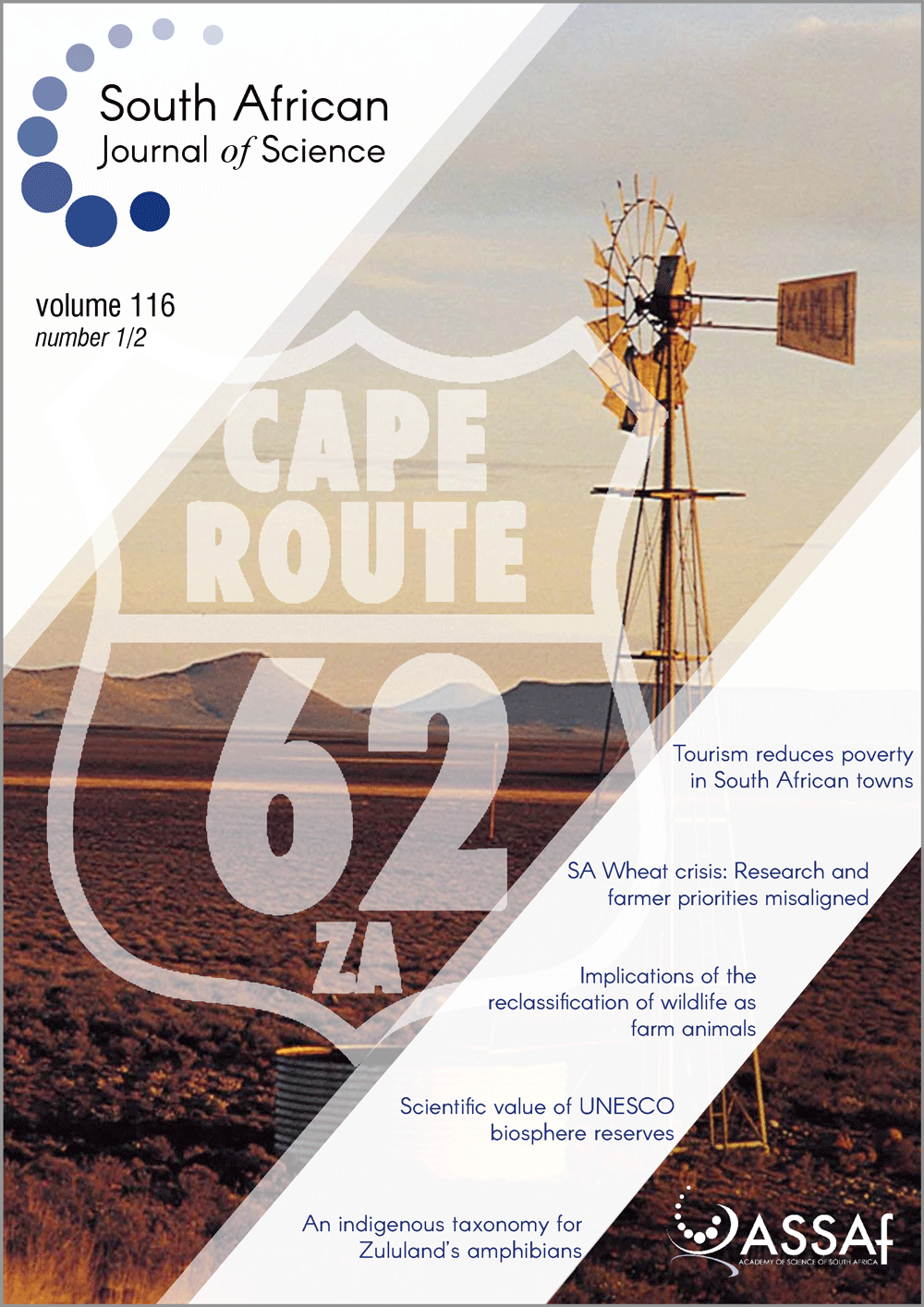Detailed palaeomagnetic record at Rose Cottage Cave, South Africa: Implications for the Holocene geomagnetic field behaviour and chronostratigraphy
DOI:
https://doi.org/10.17159/sajs.2020/6550Keywords:
palaeomagnetism, rock magnetism, remanent magnetisation, palaeosecular variations, virtual geomagnetic pole positionsAbstract
Palaeomagnetic data from a sedimentary section spanning the Holocene and terminal Pleistocene (~13 kya) from Rose Cottage Cave, eastern Free State (South Africa), are reported. The palaeomagnetic analysis took into account rock magnetism and directional analysis. The former reveals that most samples show stable single domain and superparamagnetic particles of Ti-poor magnetite and haematite. Natural remanent magnetisation directions were determined by progressive alternating field demagnetisation methodology. Directional analysis shows normal directions between samples 18 to 39 and 85 to 92; however, during the Early and Late Holocene in samples principally from RC40 to 84 ‘anomalous’ directions occurred. There is a significant westward shift in declination of ~80°, and a conspicuous fluctuating inclination in the lower part of the section during the Early Holocene at ≥9.5 kya and before ~12.0/13.0 kya. This palaeomagnetic record might become a chronostratigraphical marker for latest Pleistocene/Holocene sedimentary deposits in South Africa. Our two new accelerator mass spectrometry radiocarbon dates for the sampled deposit are 9500±50 BP and 1115±30 BP.
Significance
- The study provides new accelerator mass spectrometry dates on the chronological sequence existing in Rose Cottage Cave.
- The findings contribute to the knowledge of the geomagnetic field behaviour since the terminal Pleistocene to the Late Holocene in a period spanning the last 13 000/12 000 years.
- This palaeomagnetic record might become a chronostratigraphical marker for the latest Pleistocene/ Holocene sedimentary deposits in South Africa.
Downloads
Published
Issue
Section
License

All articles are published under a Creative Commons Attribution 4.0 International Licence
Copyright is retained by the authors. Readers are welcome to reproduce, share and adapt the content without permission provided the source is attributed.
Disclaimer: The publisher and editors accept no responsibility for statements made by the authors
How to Cite
- Abstract 1209
- PDF 760
- EPUB 248
- XML 465
- Supplementary Material 233












.png)